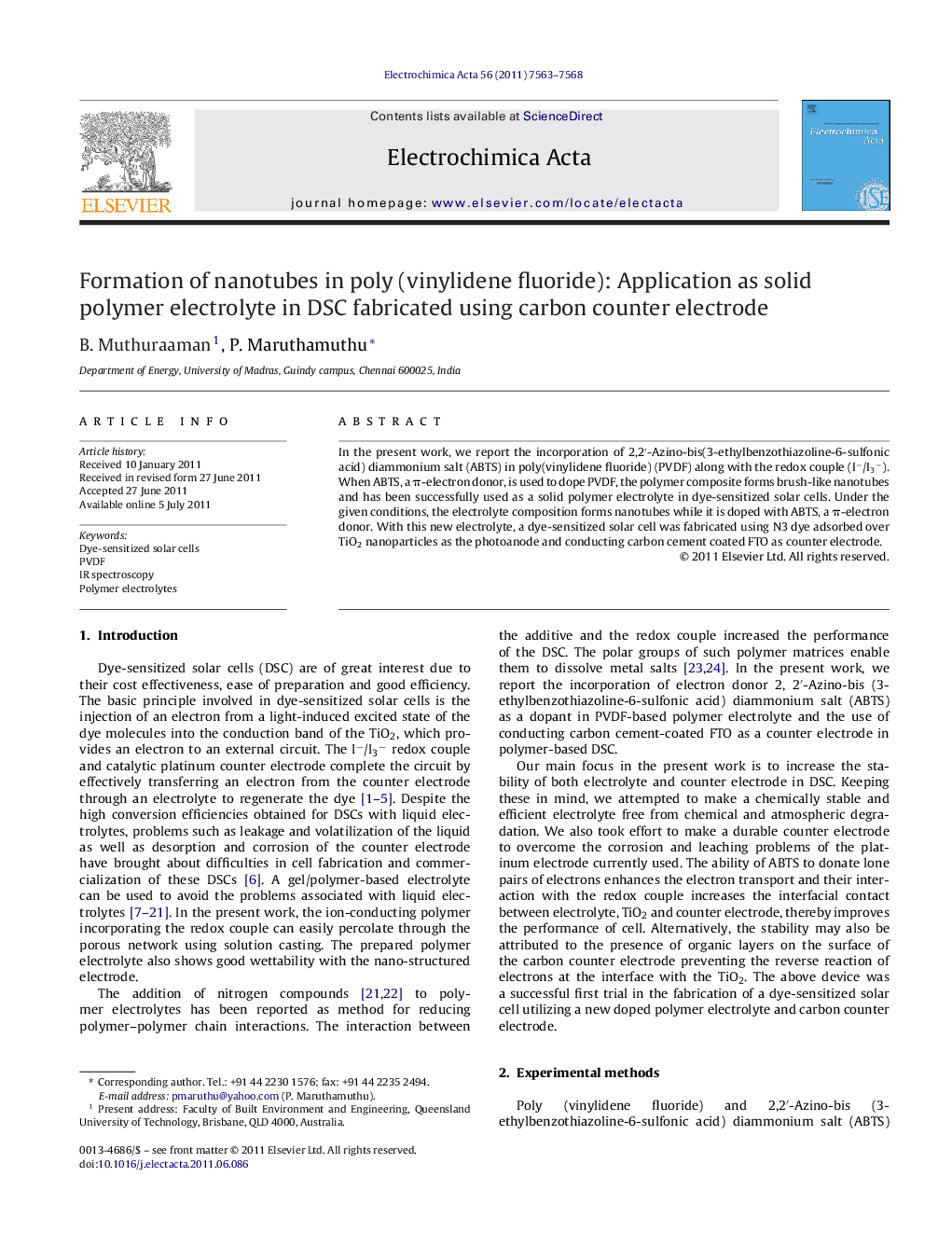| کد مقاله | کد نشریه | سال انتشار | مقاله انگلیسی | نسخه تمام متن |
|---|---|---|---|---|
| 190813 | 459708 | 2011 | 6 صفحه PDF | دانلود رایگان |

In the present work, we report the incorporation of 2,2′-Azino-bis(3-ethylbenzothiazoline-6-sulfonic acid) diammonium salt (ABTS) in poly(vinylidene fluoride) (PVDF) along with the redox couple (I−/I3−). When ABTS, a π-electron donor, is used to dope PVDF, the polymer composite forms brush-like nanotubes and has been successfully used as a solid polymer electrolyte in dye-sensitized solar cells. Under the given conditions, the electrolyte composition forms nanotubes while it is doped with ABTS, a π-electron donor. With this new electrolyte, a dye-sensitized solar cell was fabricated using N3 dye adsorbed over TiO2 nanoparticles as the photoanode and conducting carbon cement coated FTO as counter electrode.
► Incorporation of a π-electron donor compound as dopant in poly(vinylidene fluoride) along with redox couple (I−/I3−) which forms brush like nanotubes.
► Investigations about the use of conducting carbon coated FTO as a durable counter electrode and its effects in DSC.
► High charge separation and the channelized flow of electrons in the nanotubes in electrolyte favors stable performance.
Journal: Electrochimica Acta - Volume 56, Issue 22, 1 September 2011, Pages 7563–7568